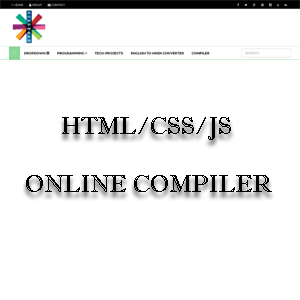How to Implement Design Patterns in Spring Boots Application
In a Spring Boot web project, design patterns are essential to create a maintainable, scalable, and testable application.
Below are some common design patterns and how you can implement them in a Spring Boot project:
Singleton PatternThe Singleton pattern ensures a class has only one instance and provides a global point of access to it. In Spring, beans are singleton by default.
For Example :
Factory Pattern
The Factory pattern is used to create objects without specifying the exact class of object that will be created.
Singleton PatternThe Singleton pattern ensures a class has only one instance and provides a global point of access to it. In Spring, beans are singleton by default.
For Example :
Factory Pattern
The Factory pattern is used to create objects without specifying the exact class of object that will be created.
For Example :
Usage in a Controller
Prototype Pattern
The Prototype pattern is used to create a new instance of a class by copying or cloning an existing instance.
Usage in a Controller
Prototype Pattern
The Prototype pattern is used to create a new instance of a class by copying or cloning an existing instance.
For Example :
Adapter Pattern
The Adapter pattern allows incompatible interfaces to work together. In a Spring Boot project, it can be used to integrate third-party libraries.
Adapter Pattern
The Adapter pattern allows incompatible interfaces to work together. In a Spring Boot project, it can be used to integrate third-party libraries.
For Example :Suppose you have an external logging service that doesn't fit directly into your logging system.
Usage:
Decorator Pattern
The Decorator pattern is used to add behavior to individual objects without affecting the behavior of other objects from the same class.
Example:
Usage:
Decorator Pattern
The Decorator pattern is used to add behavior to individual objects without affecting the behavior of other objects from the same class.
Example:
Observer Pattern
The Observer pattern allows an object to notify other objects when its state changes.
Example:
Usage in a Service:
Template Method Pattern
The Template Method pattern defines the skeleton of an al algorithm in a method, deferring some steps to subclasses.
Example:
Usage:
Conclusion: Design patterns are critical in developing well-structured, maintainable, and flexible Spring Boot applications. They help in decoupling components, reusing code, and making the application easier to understand and extend. By leveraging these patterns in your Spring Boot project, you can achieve better code organization and more effective application design.
@RestController and @Controller in Spring Framework
The primary difference between @RestController and @Controller in the Spring Framework lies in how they handle HTTP
@Controller :
@Controller :
- @Controller is used to define a controller class that can handle HTTP requests and return views.
- Typically used in web applications where the responses are HTML pages.
- You need to use @ResponseBody on methods to indicate that the return value should be written directly to the HTTP response body.
@RestController:
- @RestController is a specialized version of @Controller that combines @Controller and @ResponseBody.
- Designed for RESTful web services where the responses are typically JSON or XML.
- All methods in a class annotated with @RestController implicitly have @ResponseBody applied, so the return values are written directly to the HTTP response body.
Summary
Use @Controller when you need to return views (HTML pages).
Use @Controller when you need to return views (HTML pages).
Use @RestController when you need to create RESTful services and return data (like JSON or XML) directly in the response body.
Java 8 Introduced Key Features
Java 8 introduced several key features that significantly enhanced the language and its libraries. Here are the principal features:
Lambda Expressions:
Allow you to treat functionality as a method argument, or to create small function-like objects more concisely.
Functional Interfaces:
An interface with just one abstract method, used as the type for lambda expressions and method references.
Stream API:
Introduces a new abstraction for working with sequences of elements and performing operations like filter, map, and reduce on them.
Default Methods:
Allow you to add new methods to interfaces without breaking the existing implementations.
Optional:
A container object which may or may not contain a non-null value, to avoid `NullPointerException`.
opt.ifPresent(System.out::println);
New Date and Time API:
A comprehensive new date and time library under `java.time` package, which is more flexible and easier to use than the old java.util.Date and java.util.Calendar classes.
Nashorn JavaScript Engine:
Replaces the old Rhino JavaScript engine, allowing for the embedding of JavaScript code within Java applications.
Method References:
Provide a way to refer to methods without invoking them, which can be used for constructing lambda expressions.
These features aim to make Java code more expressive, readable, and efficient.
Lambda Expressions:
Allow you to treat functionality as a method argument, or to create small function-like objects more concisely.
Syntax:
(parameters) -> expression or (parameters) -> { statements; }
An interface with just one abstract method, used as the type for lambda expressions and method references.
Example:
java.util.function.Predicate;
java.util.function.Function;
Introduces a new abstraction for working with sequences of elements and performing operations like filter, map, and reduce on them.
Example:
List myList = ...; myList.stream().filter(s -> s.startsWith("a")).forEach(System.out::println);
Allow you to add new methods to interfaces without breaking the existing implementations.
Example:
interface MyInterface {
default void newMethod() {
............ // write Method body
} }
A container object which may or may not contain a non-null value, to avoid `NullPointerException`.
Example:
Optional opt = Optional.of("value");
A comprehensive new date and time library under `java.time` package, which is more flexible and easier to use than the old java.util.Date and java.util.Calendar classes.
Nashorn JavaScript Engine:
Replaces the old Rhino JavaScript engine, allowing for the embedding of JavaScript code within Java applications.
Method References:
Provide a way to refer to methods without invoking them, which can be used for constructing lambda expressions.
Example: ClassName::methodName.
These features aim to make Java code more expressive, readable, and efficient.
Subscribe to:
Comments
(
Atom
)




